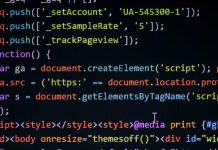One of the biggest chances for company optimization in the current competitive environment is the digital transformation of procurement procedures. From basic purchasing tools to all-inclusive systems, procurement software has transformed how businesses handle their supplier relationships and expenditures. However, navigating the intricate procurement solutions market necessitates giving careful thought to a number of important issues. To assist decision-makers in determining and putting into practice the procurement solution that will best meet the particular needs and strategic goals of their business, this handbook lists eight crucial factors.
1. Core Functionality Alignment with Business Processes
Instead of making your staff conform to strict, predetermined procedures, procurement software should improve your current operations. Assess the degree to which the essential features of each solution replicate your present procurement process, from request to payment. Examine the software’s compatibility with your purchase policies, exception-handling protocols, and approval hierarchies. The finest solutions provide enough flexibility to accommodate your current procedures while adding efficiency where necessary. Present vendors with particular process scenarios that are relevant to your company during demos, and assess how well the software responds to these situations. Keep in mind that requiring major process modifications in addition to the introduction of new technology significantly raises adoption resistance and lengthens the time it takes to see a return on investment.
2. Stakeholder Engagement and Adoption Potential
If your staff doesn’t want to use the most technically sophisticated procurement system, it’s useless. Early on in the selection process, include representatives from every stakeholder group, from financial executives to sporadic requesters. Think about how different user types are accommodated by the interface and the diverse degrees of technical familiarity that exist within your business. Examine each solution’s training needs and accessible support materials. Seek out software that provides role-based experiences, displaying just the elements that are pertinent to the tasks at hand. The success of general adoption is frequently determined by the experiences of infrequent users, so pay close attention to them. The ideal procurement software should encourage voluntary adoption rather than necessitate enforcement, and it should seem more like an empowering tool than a formality.
3. Technology Infrastructure Compatibility
Your procurement solution has to work well with the rest of your technological environment. Examine each possible software choice in light of your present infrastructure choices on security procedures, cloud strategy, and authentication methods. If the solution calls for certain hardware, browser requirements, or operating system dependencies, think about how they may go against your standards. Check the location of the solution’s hosting and processing of your data if your firm has stringent data residency requirements. Determine the bandwidth needs of mobile users or remote locales. Instead of needing exceptions or parallel systems that raise complexity and maintenance costs for your technology team, the ideal procurement software should leverage current investments and be in line with your established technological approach.
4. Strategic Supplier Relationship Capabilities
Strategic supplier management is a component of modern procurement that goes beyond transactional buying. Assess the degree to which each solution facilitates cooperative supplier relationships and performance enhancement. Seek out features that support development programs, information management, performance evaluation, and supplier onboarding. To apply suitable management techniques to various categories, think about if the system allows you to segment your supplier base. If your company prioritizes supplier diversity tracking, risk monitoring, and compliance verification, evaluate the software’s capabilities in these areas. Through supply chain excellence, the ideal procurement system should turn your supplier relationships from just transactional exchanges into strategic alliances that foster innovation, competitive advantage, and mutual value.
5. Data Intelligence and Decision Support Tools
The capacity of procurement software to translate transaction data into useful business knowledge is what gives it its revolutionary potential. A detailed evaluation of the analytical features should cover basic reporting functions through to advanced predictive analytics features. Review how well the system delivers useful insights into supplier performances and contractual use alongside expenditure patterns and potential cost optimization methods without requiring expert data science knowledge. Examine the visualization choices available to help different stakeholders understand complex procurement data. Seek out proactive alert features that highlight opportunities, hazards, or exceptions that need to be addressed. The most effective procurement solutions use sophisticated data analysis to continually find possibilities for cost reduction, process improvement, and strategic benefit in addition to automating transactions.
6. Total Implementation Resource Requirements
Beyond the purchase price, implementing procurement software necessitates substantial organizational resources. Gain a thorough grasp of all the implementation requirements for each solution that is being considered. Determine the amount of internal staff time required for implementation from the business, finance, procurement, and IT departments. Examine vendor implementation strategies, standard schedules, and client involvement requirements. Take into account the intricacy of data migration from older systems and the possible requirement for process reengineering. Evaluate the need for continuing assistance and training for various user groups. The procurement solution that reduces the overall installation effort and speeds up time to value for your company may be the best option, not the one with the lowest licensing cost.
7. Governance and Compliance Framework Support
The legislative and policy landscapes in which procurement operations take place are becoming more intricate. Assess the degree to which each software choice satisfies your compliance goals and governance needs. Examine if the system can enforce policy adherence, documentation requirements, approval hierarchies, and separation of roles without causing bottlenecks in the process. Examine the system’s audit trail capabilities and the ease with which internal or external auditors may obtain evidence from it. Seek controls that are adjustable so they may change when laws or policies do. Instead of making users choose between working efficiently and according to regulations, the ideal procurement system should make compliance an intrinsic part of simplified procedures, lowering risk and increasing productivity.
8. Future-Readiness and Innovation Roadmap
With new technologies like blockchain, artificial intelligence, and sophisticated analytics opening up new opportunities, procurement technology is still developing quickly. Examine each vendor’s development roadmap and innovation vision to make sure they complement your long-term strategic goals. Think about the vendor’s history of successful innovation rather than just feature additions. Examine how they handle cutting-edge technology such as blockchain for supply chain transparency, natural language processing for contract analysis, and machine learning for expenditure analysis. Seek out suppliers who employ collaborative development methods and have active user groups. Rather than becoming a legacy barrier that prevents you from implementing future innovations, your procurement software investment should position your company to profit from technology advancements.
Conclusion
The selection of procurement software for tail spend analysis represents a strategic decision that produces significant effects on financial outcomes, market standing, and operational effectiveness. Organizations can achieve short-term process improvement along with long-term strategic value from their selected solution through a systematic evaluation of functionality alignment and adoption potential, infrastructure compatibility and supplier relationship capabilities, data intelligence tools, implementation requirements, governance support, and future readiness.





































